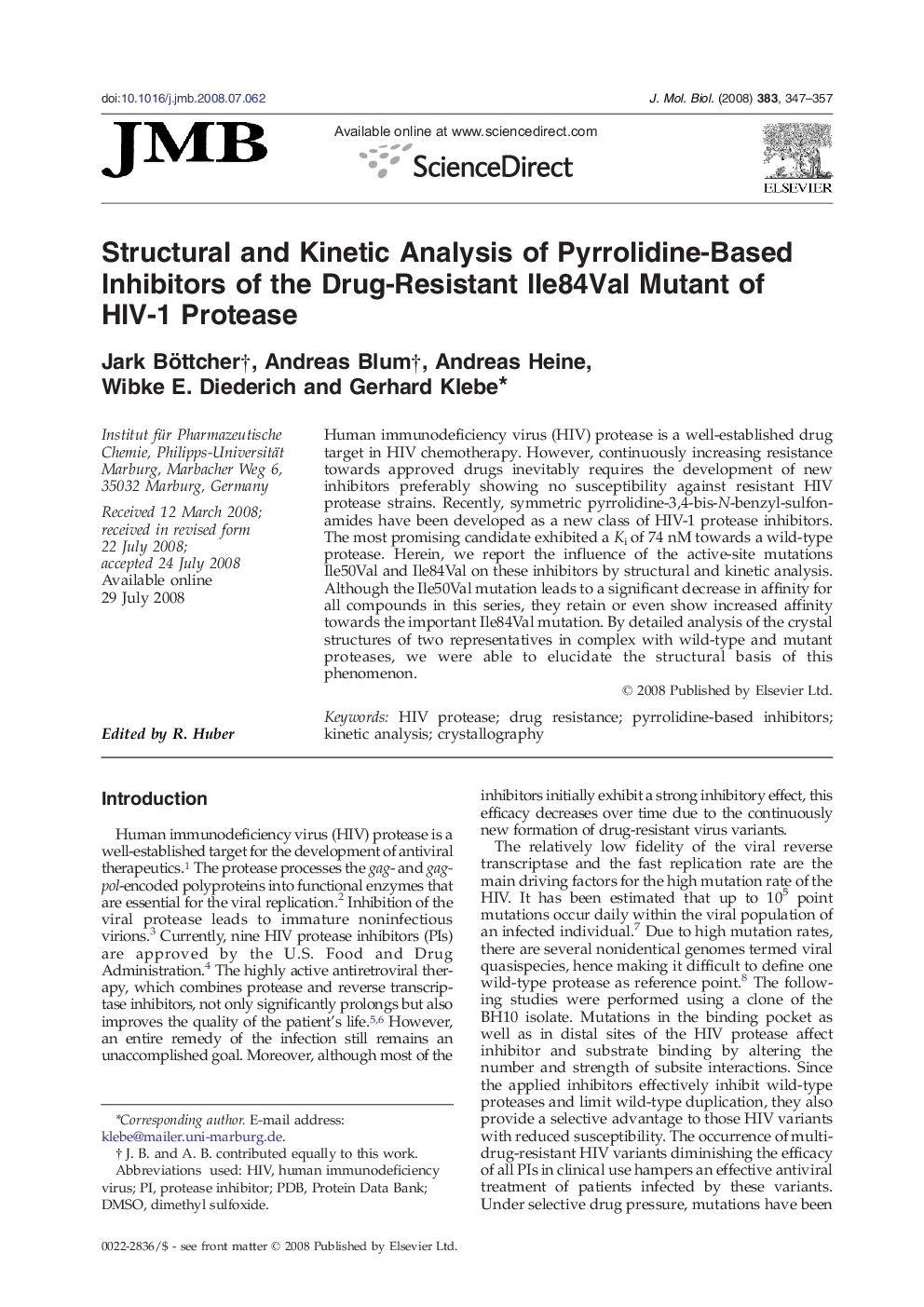| Article ID | Journal | Published Year | Pages | File Type |
|---|---|---|---|---|
| 2187133 | Journal of Molecular Biology | 2008 | 11 Pages |
Human immunodeficiency virus (HIV) protease is a well-established drug target in HIV chemotherapy. However, continuously increasing resistance towards approved drugs inevitably requires the development of new inhibitors preferably showing no susceptibility against resistant HIV protease strains. Recently, symmetric pyrrolidine-3,4-bis-N-benzyl-sulfonamides have been developed as a new class of HIV-1 protease inhibitors. The most promising candidate exhibited a Ki of 74 nM towards a wild-type protease. Herein, we report the influence of the active-site mutations Ile50Val and Ile84Val on these inhibitors by structural and kinetic analysis. Although the Ile50Val mutation leads to a significant decrease in affinity for all compounds in this series, they retain or even show increased affinity towards the important Ile84Val mutation. By detailed analysis of the crystal structures of two representatives in complex with wild-type and mutant proteases, we were able to elucidate the structural basis of this phenomenon.
